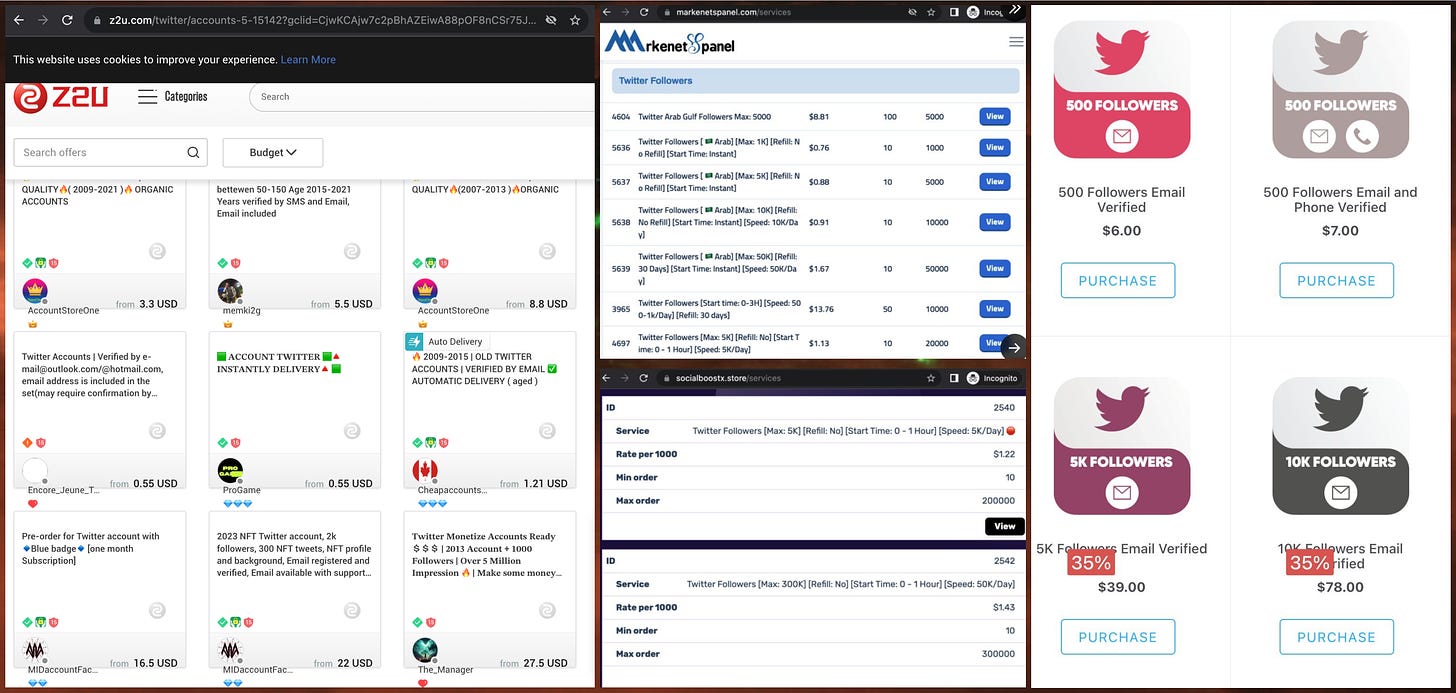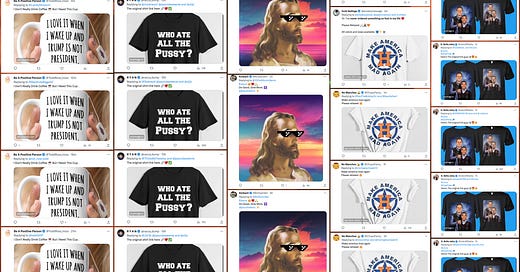Why subscription fees are not a magic bullet against spam
The power of paid subscriptions to vanquish social media spam has been greatly exaggerated
In the year since SpaceX/Tesla CEO Elon Musk assumed control of the social media platform formerly known as Twitter (now X), the site’s new leadership has repeatedly asserted that subscription fees are “the only way” to fight spam and malicious bots. These assertions have been unaccompanied by evidence, however, and a few quick searches are sufficient to demonstrate that the current X Premium/Twitter Blue paid subscription feature is regularly exploited by spammers hawking everything from cryptocurrency tokens to coffee mugs. Fees also do not present much of an obstacle to organized efforts to manipulate the platform: for-profit spam operations will simply incorporate the fees into their own pricing structures (or use compromised accounts), and nation-states and other political actors with even a minimal budget won’t balk at plunking down some cash for a few dozen or a few thousand fake accounts. Finally, large subscription-based online platforms have in fact already been in operation for over two decades in the form of massively multiplayer games such as World of Warcraft, which experience high rates of spam and botting despite charging fees.
Far from eliminating spam, X’s $8/month blue verification checkmark has been embraced by spammers who take advantage of the visibility boost that comes with paid verification. These accounts posts hundreds or thousands of identical replies, which often get algorithmically pushed to the top of the reply sections of the posts they reply to. These replies generally promote various products and link to other posts or external websites where the aforementioned products can be purchased. T-shirts, coffee mugs, and cryptocurrency are among the wares most commonly shilled by blue check reply spammers. The price of the subscription, and risk of forfeiting the money if the accounts are suspended, has failed to deter this form of spam.

Another issue with the notion that paid subscriptions will stop spam: a lot of spam on social media platforms is generated by accounts belonging to commercial spam operations that sell posts, reposts, likes, follows, views, etc. These businesses are unlikely to shut down simply because a platform starts charging subscription fees. Instead, they will most likely incorporate the costs of any necessary subscriptions into the prices they charge their own customers. Additionally, spam-for-hire companies that make use of hacked or compromised accounts have little reason to care about subscription fees at all, since they won’t be the ones paying the fees. (The Round Year Fun/realactivefollowers.com follower sales site, which uses legitimate accounts that have been tricked into granting extensive permissions to a malicious app, is an example.)

One last point: although major social media platforms have thus far favored ad-driven business models, paid subscriptions for access to large online platforms are not a new concept. Monthly fees have been commonplace for massively multiplayer online roleplaying games such as World of Warcraft since the birth of the genre. Despite the existence of these fees, these games are nonetheless replete with spam — public chat channels in major in-game cities are often flooded with messages from illicit gold sellers whose wares were likely garnered by botting (a word which, in this context, refers to automating the actions of game characters). Making games pay-to-play has not dissuaded spammers, and doing the same with social media platforms is unlikely to have a different result.




